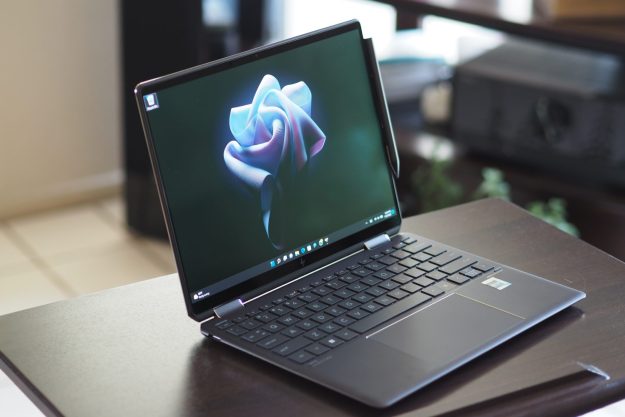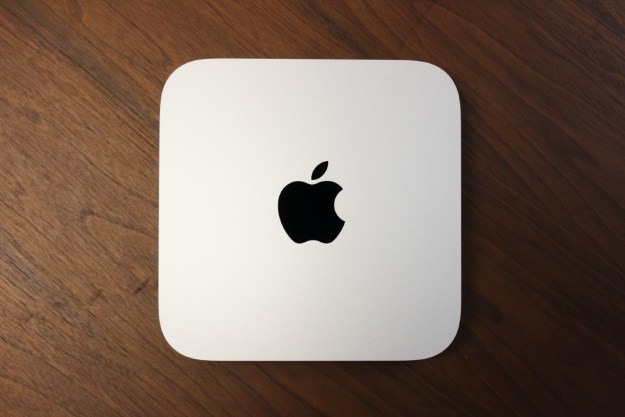If you want the best graphics card for your gaming PC, there are only two options: Nvidia and AMD. Although their rivalry dates back decades — back before AMD bought ATI for its graphics division — they’re still battling it out in 2021. And the competition has never been more fierce.
We’re here to break down all of the differences between Nvidia and AMD, how each of their graphics cards perform, and what you can expect to pay. There are a lot of differences between Team Green and Team Red, and they both make excellent graphics cards. Based on our testing and experience, though, there’s one clear winner.
Nvidia vs. AMD in 2021

Before getting to the specifics, let’s set the stage. Nvidia and AMD released new GPU generations in 2020, and they’re expected to release new generations in 2022. Nvidia is currently selling its RTX 30-series graphics cards, and AMD is selling its RX 6000 graphics cards. Next year, we should see RTX 40-series and RX 7000 GPUs.
Here are the most recent desktop graphics cards Nvidia is selling, ranked by raw power with the RTX 3090 being the most powerful:
- RTX 3090
- RTX 3080 Ti
- RTX 3080
- RTX 3070 Ti
- RTX 3070
- RTX 3060 Ti
- RTX 3060
AMD has a similar lineup of desktop graphics cards available. Here are the most recent AMD graphics cards, also ranked by raw power:
- RX 6900 XT
- RX 6800 XT
- RX 6800
- RX 6700 XT
- RX 6600 XT
- RX 6600
Although we ranked the cards based on raw power, that doesn’t mean you should gun for the top card from each range. The RTX 3090, for example, is the most powerful card out of Nvidia’s lineup on paper. However, a lot of that power shows through in professional creative workloads, such as 3D modeling and rendering. Similarly, the RX 6900 XT is the fastest card from AMD’s lineup, but the RX 6800 XT is nearly as good when it comes to gaming.
These are the most recent cards from AMD and Nvidia, but you shouldn’t discount previous generations. Right now, we recommend sticking with either current-gen or last-gen parts. We’ll explain why throughout this comparison, but the short of it is that the last two generations of AMD cards have been much better than the generations before, and the last two generations of Nvidia cards have access to some critical gaming features.
Pricing and availability
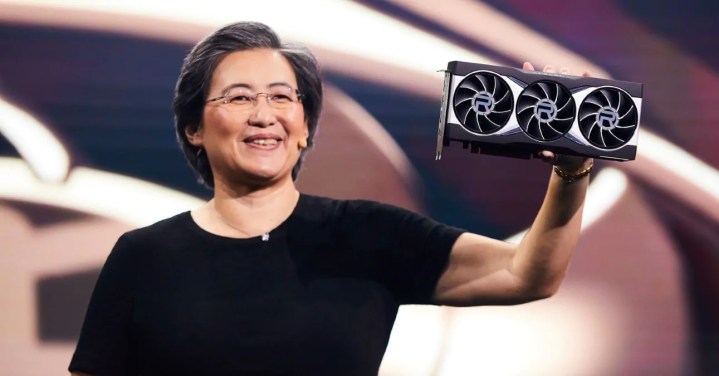
For years, AMD has been the best option for PC builders on a budget. In 2021, however, Nvidia and AMD are closely matched when it comes to pricing, and AMD is even a little more expensive in some cases.
Starting with Nvidia, the cheapest RTX 3060 has a list price of $329 and the most expensive RTX 3090 has a list price of $1,499. AMD’s cheapest card, the RX 6600, also has a list price of $329, but its most expensive RX 6900 XT only lists for $999. Across the range, you’re looking at a $50 difference at most for comparable cards outside of the RX 6900 XT. The RTX 3070, for example, is $20 more expensive than the RX 6700 XT.
Unfortunately, list prices mean nothing in 2021. The GPU shortage has skyrocketed the price of graphics cards on the secondhand market, and a slew of tariffs and supply chain issues have led to increased prices at retailers. Almost universally, cards are selling for twice their list price, even at retailers.

There are a few notable exceptions. The RX 6900 XT is only selling for $500 more than its list price, and it’s one of the most readily available cards at retailers. The RX 6600 and RX 6600 XT are near list price, too, though many third-party models released with a price of $100 or more than what AMD set.
Across the board, AMD cards are cheaper and have better availability. We’ve tracked the GPU market for over a year now, and AMD cards are the ones that come back in stock before Nvidia ones. AMD cards sell for about $100 less than their Nvidia counterparts on the secondhand market, though that largely comes down to what seller you can find.
In the overpriced GPU market of 2021, nobody wins. We recommend picking based on performance and features before seeking out the best deal on the card you want.
Performance
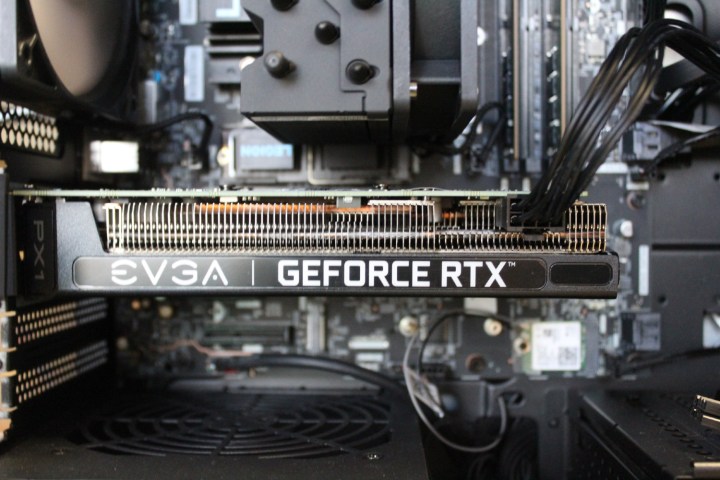
Nvidia has been the market leader in GPU performance for years, but AMD has made up a lot of ground. Although Nvidia graphics cards are better performers overall, the margins are much thinner than they used to be. And in some cases, AMD cards actually shoot ahead of the Nvidia competition.
The RX 6600, RTX 3060, and RX 6600 XT are the cheapest cards available, and they all target 1080p gaming. At 1080p with the graphics settings turned up, we found that the RX 6600 trails the RTX 3060 by about 7% across our suite of benchmarks. The RX 6600 only managed to outclass the RTX 3060 in one game — Assassin’s Creed Valhalla.
| AMD RX 6600 | AMD RX 6600 XT | Nvidia RTX 3060 | |
| 3DMark Time Spy (GPU score) | 8,071 | 9,644 | 8,629 |
| Red Dead Redemption 2 | 59 fps | 68 fps | 65 fps |
| Fortnite | 98 fps | 137 fps | 132 fps |
| Assassin’s Creed Valhalla | 71 fps | 83 fps | 64 fps |
| Battlefield V | 120 fps | 139 fps | 123 fps |
| Civilization VI | 138 fps | 161 fps | 143 fps |
For the RX 6600 XT, it managed to beat the RX 6600 and RTX 3060 by a wide margin, with up to a 16% gap between it and its non-XT counterpart. The RX 6600 XT encroaches on the territory of the RTX 3060 Ti in terms of price, though. In that comparison, the RTX 3060 Ti is the clear winner. It’s the best 1080p graphics card based on our testing.
At list price, the RTX 3060 Ti is surprisingly close to the RX 6700 XT for almost $100 less. It’s still behind, but not by much. The RX 6700 XT and RTX 3070 target 1440p, and they’re both capable cards at that resolution. Once again, our testing showed that AMD’s offering is about 10% behind, with some games, such as Assassin’s Creed Valhalla, favoring the AMD GPU.
| Nvidia RTX 3070 Ti | Nvidia RTX 3080 | AMD Radeon RX 6700 XT | |
| 3DMark Time Spy | 13893 | 16108 | 11726 |
| 3DMark Fire Strike | 26516 | 28460 | 26830 |
| Assassin’s Creed Valhalla | 50 | 52 | 42 |
| Battlefield V | 80 | 100 | 69 |
| Fortnite | 70 | 95 | 58 |
| Civilization VI | 139 | 158 | 115 |
Past these cards, we get into 4K territory, and things start to get strange. The RTX 3070 Ti just barely pushes over the 4K line, but the RTX 3080 beats it by a wide 14% margin overall. Based on our testing, the RTX 3080 is the best entry point to 4K gaming assuming you can find one at a reasonable price.
AMD’s competing RX 6800 and RX 6800 XT are close to the RTX 3080. Based on third-party testing, the RX 6800 XT is within a few frames of the RTX 3080 with ray tracing turned off. The RX 6800, meanwhile, delivers performance just ahead of the RTX 3070 Ti. Unlike the low-end cards, the RX 6800 XT and RTX 3080 are evenly matched as long as you don’t factor in ray tracing.
You really shouldn’t go above either the RX 6800 XT or RTX 3080 for gaming. The RTX 3080 Ti shows about a 9% advantage over the RTX 3080, but at $500 more. The RX 6900 XT and RTX 3090, meanwhile, are the best of the best. But as is the case with all top-of-the-line parts, they show diminishing returns.
| Nvidia RTX 3080 Ti | Nvidia RTX 3080 | AMD Radeon RX 6900 XT | |
| 3DMark Time Spy | 17634 | 16108 | 17340 |
| 3DMark Fire Strike | 30951 | 28460 | 38911 |
| Assassin’s Creed Valhalla | 56 | 52 | 69 |
| Battlefield V | 104 | 100 | 106 |
| Fortnite | 95 | 93 | 99 |
| Civilization VI | 177 | 158 | 184 |
Take the RX 6900 XT as an example. It’s $200 less than the RTX 3080 Ti, but it should perform on the level of the RTX 3090. Based on our testing, it offers a minor uplift over the RTX 3080 Ti across games, though not enough to make a difference.
That leaves the RTX 3090, which is pointless for gaming. The RTX 3080 Ti is almost identical in terms of specs, and the RTX 3090 only performs about 3% above in most games. The RTX 3090 is a creative workhorse, shining with its 24GB of video memory in 3D modeling and rendering applications.
Overall, AMD cards trail their Nvidia counterparts at each price point, with the gap shrinking from about 10% on the low-end cards to a few percentage points on the high-end ones. It’s important to keep in mind price, though. Performance is always relative, and you can’t separate price from that. AMD cards sell for less on the secondhand market, so don’t discount Team Red. RX 6000 cards are excellent performers.
Ray tracing and upscaling

If you’re interested in ray tracing and upscaling, you can throw all of the performance numbers above out the window. Simply put, Nvidia is the only option when it comes to ray tracing and upscaling. AMD offers hardware-accelerated ray tracing and its own upscaling feature, but they don’t come close to the competition from Nvidia.
During our testing of ray tracing games like Cyberpunk 2077 and Control, we found the same results time and again. AMD cards can’t handle ray tracing like Nvidia cards can. That comes down to a fundamental difference in the two companies approach GPU design.
Nvidia RTX 30-series GPUs include dedicated ray tracing cores. These cores handle ray tracing and they’re separate from the GPU cores. AMD, on the other hand, packs a ray accelerator into each compute unit. AMD cards still have hardware-accelerated ray tracing, but the cores that handle ray tracing don’t have nearly as much power behind them.
The big reason Nvidia has an advantage, though, is Deep Learning Super Sampling (DLSS). Ray tracing is demanding, and although Nvidia cards are better set up for it, you can still expect your frame rate to tank with ray tracing turned on. Enter DLSS, which uses A.I. to upscale games and improve performance.
Based on our testing of DLSS, it can over a 100% improvement in supported games. DLSS takes advantage of Tensor cores on RTX 30-series and 20-series graphics cards. The Tensor cores basically run an A.I. model that has been trained on high-quality scans of a game, so it can reconstruct the image with shocking accuracy in real time.

AMD has an upscaling feature, too: FidelityFX Super Resolution (FSR). Unlike DLSS, FSR works across all graphics cards — Nvidia and AMD alike. That’s because it doesn’t leverage any dedicated hardware and it doesn’t use A.I. to upscale the image. FSR is based on an older spatial upscaling algorithm that AMD tweaked.
DLSS and FSR aren’t the same thing, even if they drive toward the same goal. FSR offers a larger uplift in performance, as you can see in our FidelityFX Super Resolution review, but at a significant cost to image quality. DLSS still provides a large increase while looking much closer to native resolution.
In the context of ray tracing, upscaling is essential. It’s still too demanding for modern hardware to run, so you need to turn on either DLSS or FSR to get the best performance and image quality. DLSS is the better option out of the two, and it’s often included alongside ray tracing. It’s just a shame that DLSS is restricted to the last two generations of Nvidia graphics cards.
Software and drivers
There isn’t much of a comparison between AMD and Nvidia when it comes to driver support. We’ve seen issues with both when it comes to driver releases in the past, and both are quick to solve those issues when they come up. AMD and Nvidia also frequently release drivers alongside new games releases. Single out a single game or single driver release, and you’ll find a winner. Overall, AMD and Nvidia are evenly matched in driver quality and support.
They aren’t evenly matched in software, though. Nvidia offers GeForce Experience for its graphics cards, but it’s more of an overlay than anything else. The app allows you to apply optimized settings to supported games, which Nvidia dials in based on the graphics card you have. Otherwise, the app is just a way to turn on the in-game overlay.
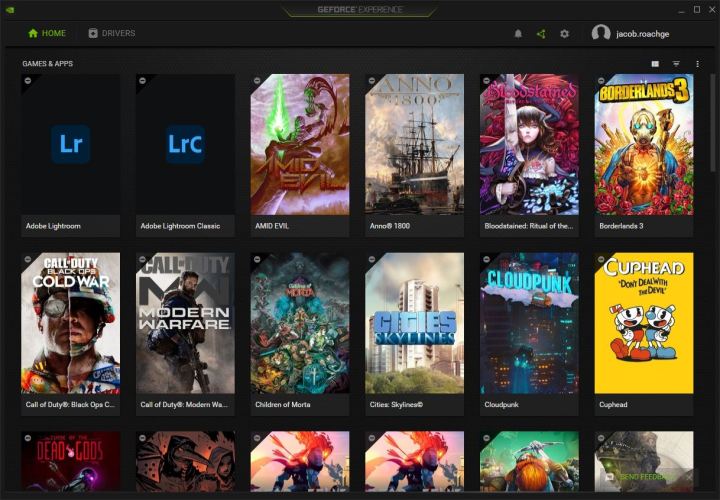
The overlay allows you to do all sorts of things, including streaming to Twitch, capturing gameplay, and displaying performance numbers on your screen. You can also apply photo mode to any game with Nvidia Ansel, as well as dial in an overclock with the built-in performance tweaker.
For most, the instant replay and highlights features are the ones that stand out. Instant replay allows you to capture up to 20 minutes of past gameplay footage, and highlights automatically capture moments when you achieve certain conditions in supported games (say, a medal in Destiny 2). All of these capture methods use Nvidia Shadowplay, which supports screenshots and videos at up to 8K.
AMD has Radeon Software, which comes with a much more robust list of features. It has almost too many to list. Like GeForce Experience, you have access to instant replay, screenshot and video capture, performance monitoring, and graphical settings for supported games. You can also stream with Radeon Software, as well as apply an overclock to your GPU.
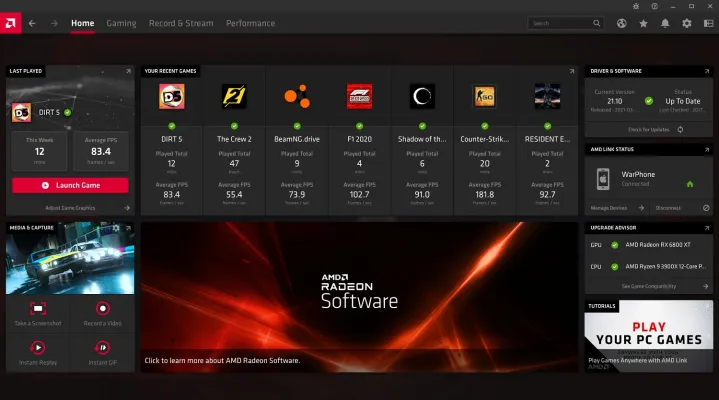
Radeon Software has a few extra goodies, though. Integer Scaling, for example, upscales retro games to work on modern displays, and AMD Link allows you or your friends to connect to your PC remotely on almost any device. All of AMD’s gaming features — FreeSync, Radeon Chill, and Radeon Anti-Lag, to name a few — are accessible through Radeon Software as well.
That’s the biggest difference between the two. Radeon Software gives you a window while GeForce Experience gives you an overlay. On its own, GeForce Experience does very little. You need to use the overlay, and that’s a problem when the overlay is prone to fail while playing games. On top of that, some Nvidia features are restricted to the Nvidia Control Panel, which is a separate piece of software that’s in desperate need of a facelift.
The two pieces of software are evenly matched on features, with a slight edge to GeForce Experience thanks to Ansel. Radeon Software is easier to use, however, and it includes more quality of life improvements.
Mobile GPUs
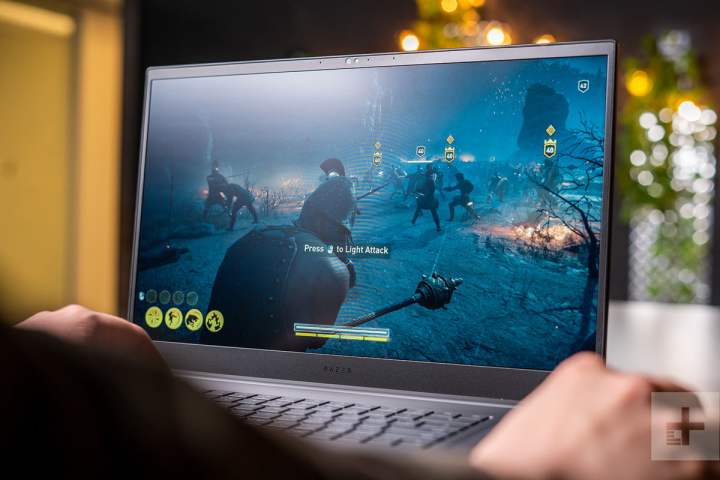
Along with desktop graphics cards, Nvidia and AMD have mobile GPUs. But you’ll find a lot more laptops with Nvidia graphics cards. Similar to Intel vs. AMD, Nvidia has a much larger stake in the mobile market, and you’ll generally find laptops with an Nvidia graphics card and Intel processor.
It’s difficult to draw any firm conclusions about how AMD and Nvidia mobile GPUs perform compared to each other. For example, the RX 6800M inside the Asus ROG Strix G15 outperforms the RTX 3080 inside the MSI GS66 Stealth. The MSI laptop doesn’t feature a fully powered RTX 3080, though, and it doesn’t have as robust of a cooling solution. So, is AMD better for mobile graphics cards? It’s a little more complicated than raw performance.
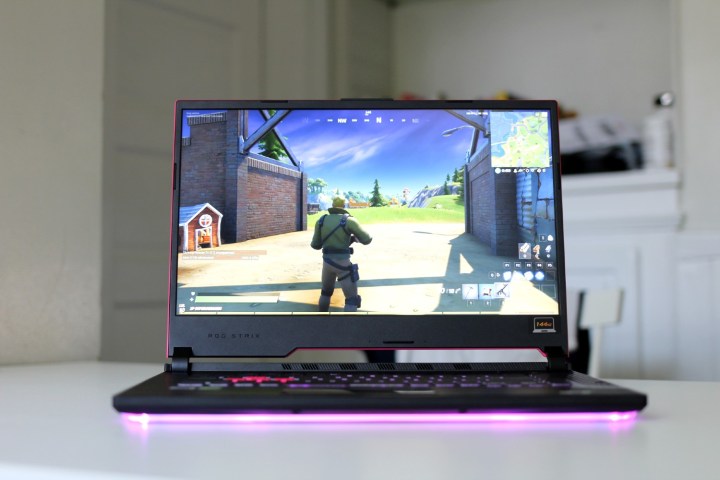
Mobile graphics cards don’t match their desktop counterparts, and laptop designers are free to choose how much power the cards get. The RTX 3080 inside the MSI GS66 Stealth, for example, tops out at 95W. The RTX 3080 inside the Razer Blade 15 can draw up to 105W of power, and it unsurprisingly performs better. Add on top of that different cooling solutions, and the comparison isn’t so straightforward.
When it comes to mobile GPUs, individual laptop reviews are a must. There are absolutely differences between graphics cards — the RX 6800M will perform better than the RX 6700M, and so on. But when it comes to two comparable graphics cards, the laptop design plays a much more significant role in performance than if you went with an AMD or Nvidia GPU.
Keep in mind DLSS and ray tracing, though. Nvidia mobile GPUs still have access to these features, and our conclusions on the desktop cards apply here.
Performance parity, feature leader (Nvidia wins)

AMD has tried to reach performance parity with Nvidia for years. And RX 6000 graphics cards hit that mark, sometimes even exceeding it. That puts the focus on pricing and features. For pricing, AMD graphics cards are selling for less than their Nvidia counterparts. Factor in ray tracing and DLSS, though, and that extra price is justified.
That doesn’t mean AMD is a bad option. In 2021, AMD is a better option than it has been in years. That said, it’s hard to recommend AMD over Nvidia simply because cards from both brands are overpriced in 2021. Maybe that changes when prices settle down, but for now, Nvidia is the winner.
Editors' Recommendations
- No, The Last of Us PC requirements aren’t changing
- The most demanding PC games that push your rig to the limit
- Nvidia just fixed a major problem that may have slowed down your CPU
- Windows 12: the top features we want to see in the rumored OS
- If you have an Nvidia graphics card, your CPU may be suffering right now

